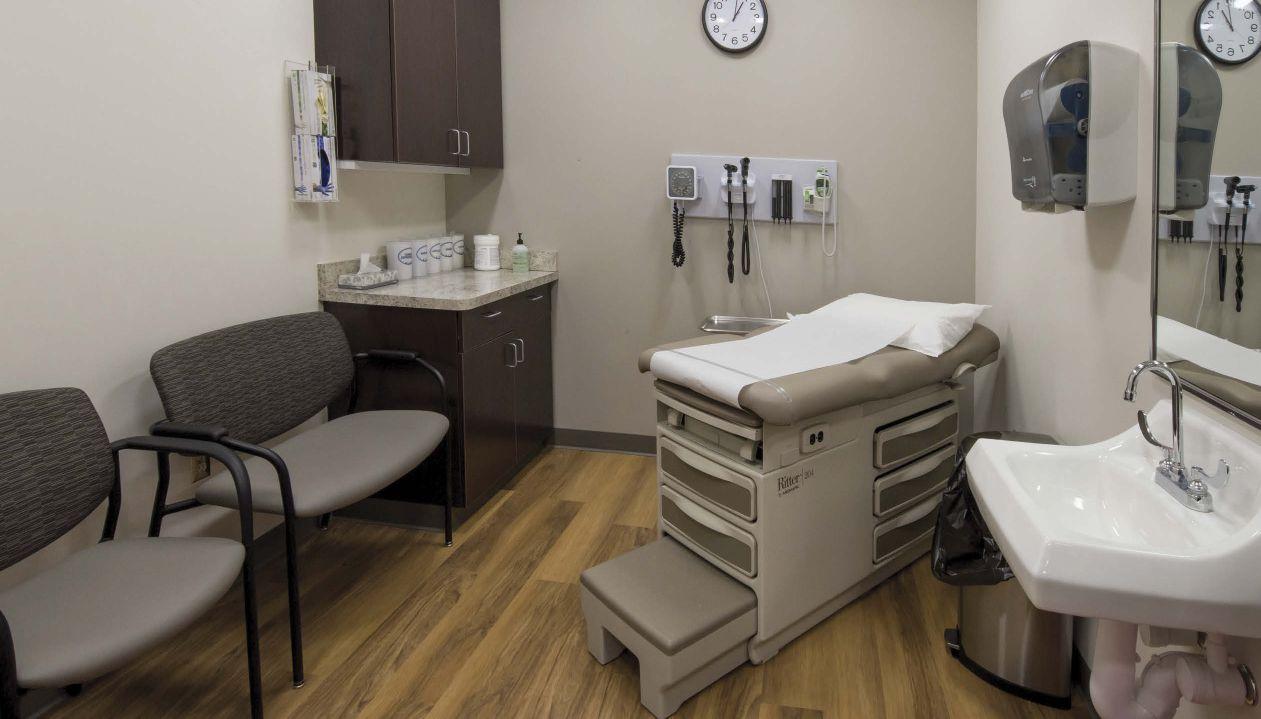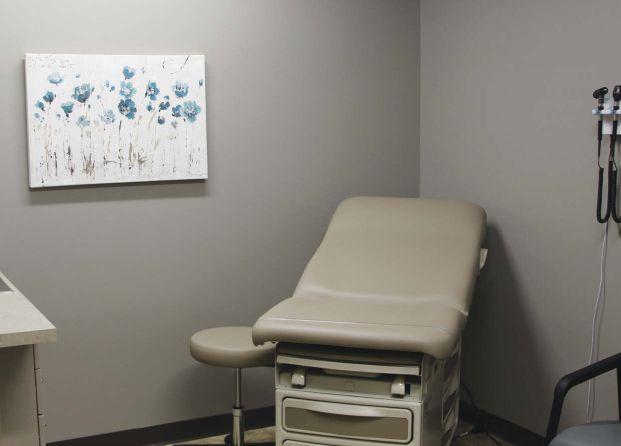
3 minute read
Perhaps it was time to deliver health care a
–LYNETTE KLUVER DIRECTOR OF ORGANIZATIONAL DEVELOPMENT ALEXANDRIA INDUSTRIES
Marvin’s clinic do require a copay, but preventive visits such as annual physicals, blood pressure evaluations and diabetes management are 100 percent covered, according to Alissa Partee, director of Total Rewards for The Marvin Cos. “The premise of the clinic is to offer employees affordable, convenient, highly accessible care that makes sense,” Partee says. “Health care is rapidly changing — how people access care, how much care costs — and there’s a lot of variables that go into that location. When we looked at an onsite clinic, we found a way that we could normalize some of that variability.”
How it Works
Alexandria Industries owns the clinic and pays for the space and equipment, while Achieve Wellness operates it and handles all confidential medical records just as any clinic would. Achieve Wellness also is responsible for recruiting and hiring clinic staff. Marvin partnered with HealthStat to operate its clinic and the two organizations employ an operational structure similar to that of Alexandria Industries and Achieve Wellness.
Staffing is a “wild card,” Sherman says. “You don’t always know how long it’s going to take to find that person.” But the environment of the clinic was appealing to practitioners during the hiring process, he adds. “It’s so drastically different from what they’re used to working with in their current, traditional environment.”
Employees at both Alexandria Industries and Marvin can still choose traditional health care insurance and continue to visit practitioners off-site. But most employees do choose to take advantage of the clinic for themselves and their families, Kluver says, adding the feedback from employees has been “absolutely amazing.” Partee agrees.
There are limitations to services the clinics can provide. They do not offer imaging or inpatient services, for example. Sherman says if a patient requires a referral for a service Alexandria Industries’ clinic can’t provide, Achieve Wellness works with that patient to ensure the best care possible, focusing on conscious consumerism and helping the patient evaluate costs and best possible outcomes, he adds. “And really just go over those options with them to make sure they’re making the best decision for them and their family, without any other incentives to move them through any particular system just because of a business relationship or anything like that. It’s really a very pure setting. We’re very proud of that aspect of it.”
Growing Trend
Marvin and Alexandria Industries are among many companies that are choosing to offer onsite clinics for their employees and families, as health care costs rise and policies change. “There’s really been a resurgence in onsite clinics in the last couple years as employers are looking to increase productivity, as they’re looking to really keep costs down,” says Brooks Deibele, vice president of group markets for Blue Cross Blue Shield of Minnesota. “It’s an opportunity for the employer to keep costs down. It’s also an opportunity for their members to decrease their out-ofpocket costs as well.”
Partee says it’s too soon to tell if Marvin’s employee clinic, open since January, will result in a cost savings for the company. For Alexandria Industries, Kluver says the onsite clinic likely will save money, particularly in office calls, lab expenses and prescription benefits. The clinic doesn’t have a full pharmacy but can provide some generics.
Sherman adds that the structure effectively bypasses markups in health care costs paid at traditional clinics. “Because we don’t have that overhead that a large clinic chain or a large hospital has, we have the ability to work out a contractual structure with our clients that really simplifies things,” Sherman says. “There are some tremendous markups on basic products and services delivered through our traditional health care system that are quite unbelievable.”
BCBS of Minnesota works with about 12 companies that own clinics, Deibele says. The trend has taken off more quickly in Minnesota than it has in neighboring North Dakota. Deibele speculates that could be a result of multiple factors, but trends like this also tend to gain more traction within certain industries. “Minnesota has always been a progressive health care marketplace,” he says.
Michael Carlson, director of employer consulting and wellness services for

Blue Cross Blue Shield of North Dakota, says the group has collaborated with employers in the state to study the feasibility of onsite clinics. “The viability of an onsite clinic depends heavily on the volume of employees located at one individual location,” he says. “Because of that requirement, we have not experienced the need for onsite clinics in North Dakota.”

Deibele predicts the trend will grow and expand in the coming years. “As costs continue to escalate, as an increase in chronic conditions continues to escalate, employers are looking for ways to better manage the health of their population, improve productivity and ways to ultimately drive their costs down. It’s a low-cost, effective way to manage certain conditions and help drive preventive care.”
Not to mention the benefits it brings to little boys like Charlie who like to ease into their doctor visits.













